Stretched Ears 101: The Ultimate Guide to Safe and Stylish Ear Stretching
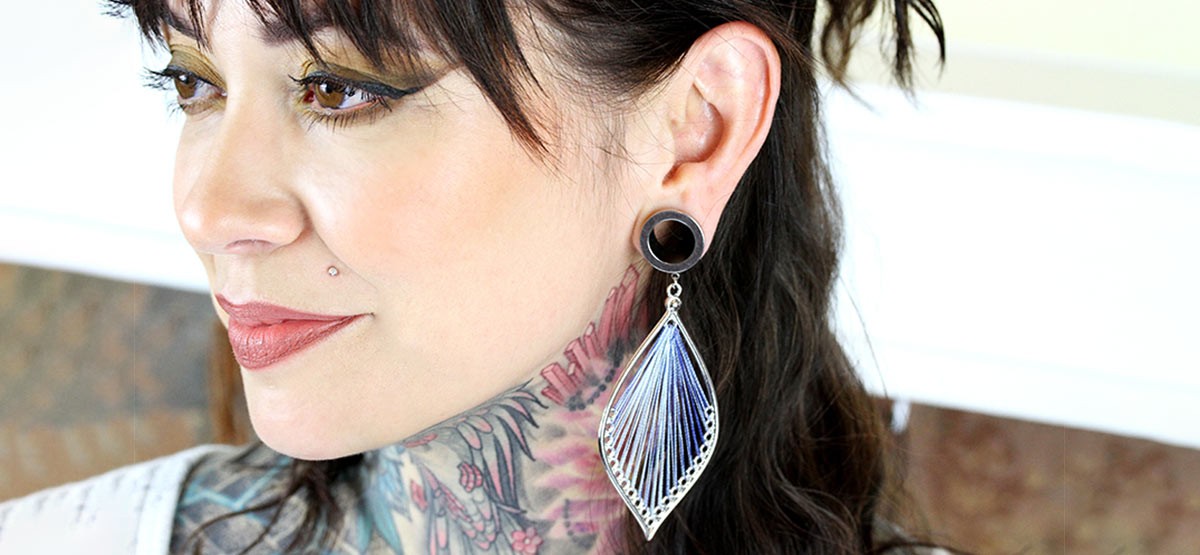
Curious about stretched ears? This guide lays out the steps to safely stretch your ears, the care needed to maintain them, and the solutions to common stretching issues. Learn the importance of the right gauge selection and proper technique to ensure your stretched ears remain healthy.
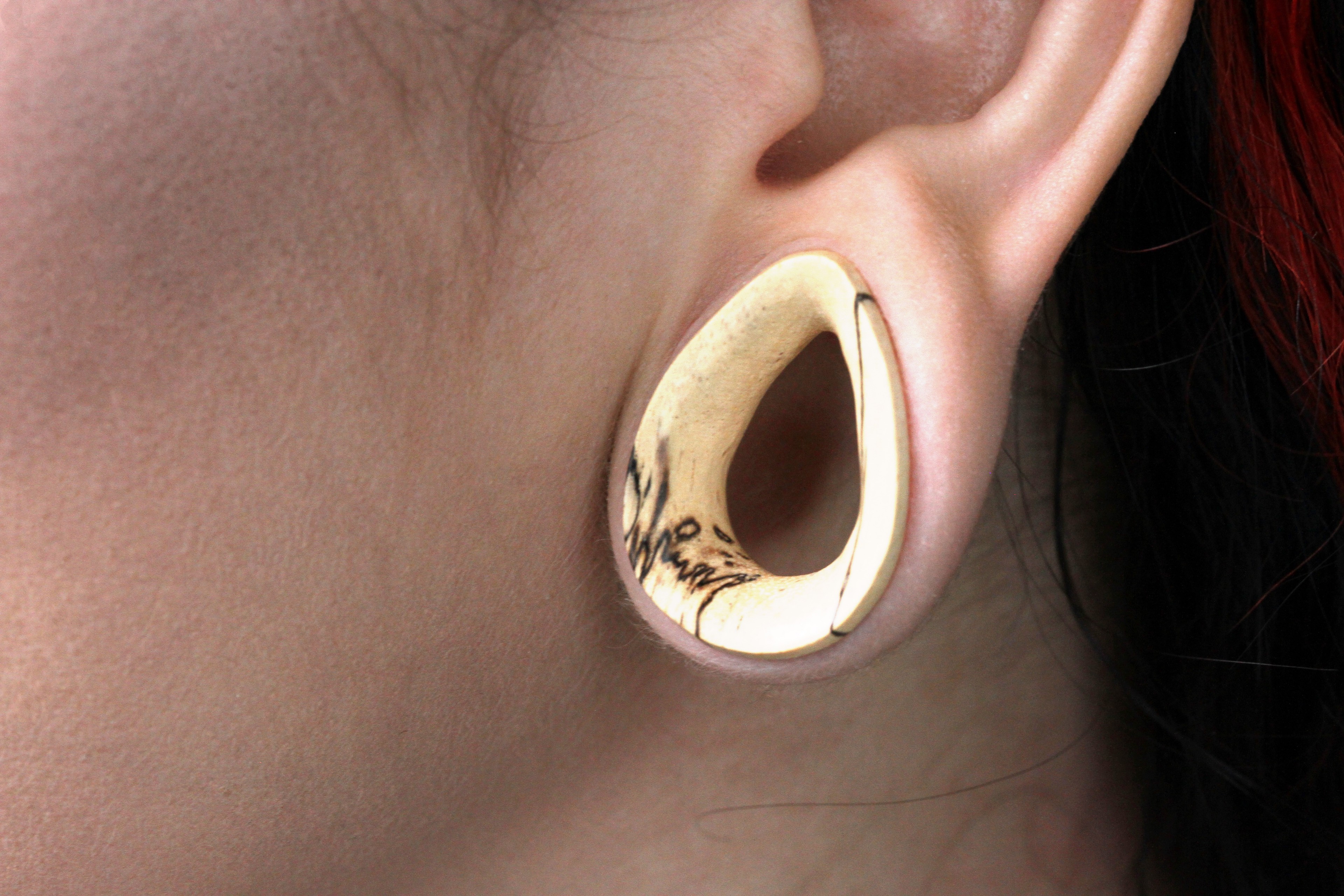
The Journey of Ear Stretching
Ear stretching is more than just an aesthetic pleasure. It’s a practice steeped in history, dating back thousands of years and spanning across different cultures. Each ear stretching process is a testament to wisdom, reflecting respect for the body’s readiness to adapt and change.
Beginning your journey, the first step is an initial piercing, which serves as your entrance into the world of ear stretching. But don’t rush! Give your ears a generous healing period to prevent complications. For those certain about their commitment to stretching, a slightly larger gauge initial piercing can bypass smaller sizes, starting the stretching process on a higher note.
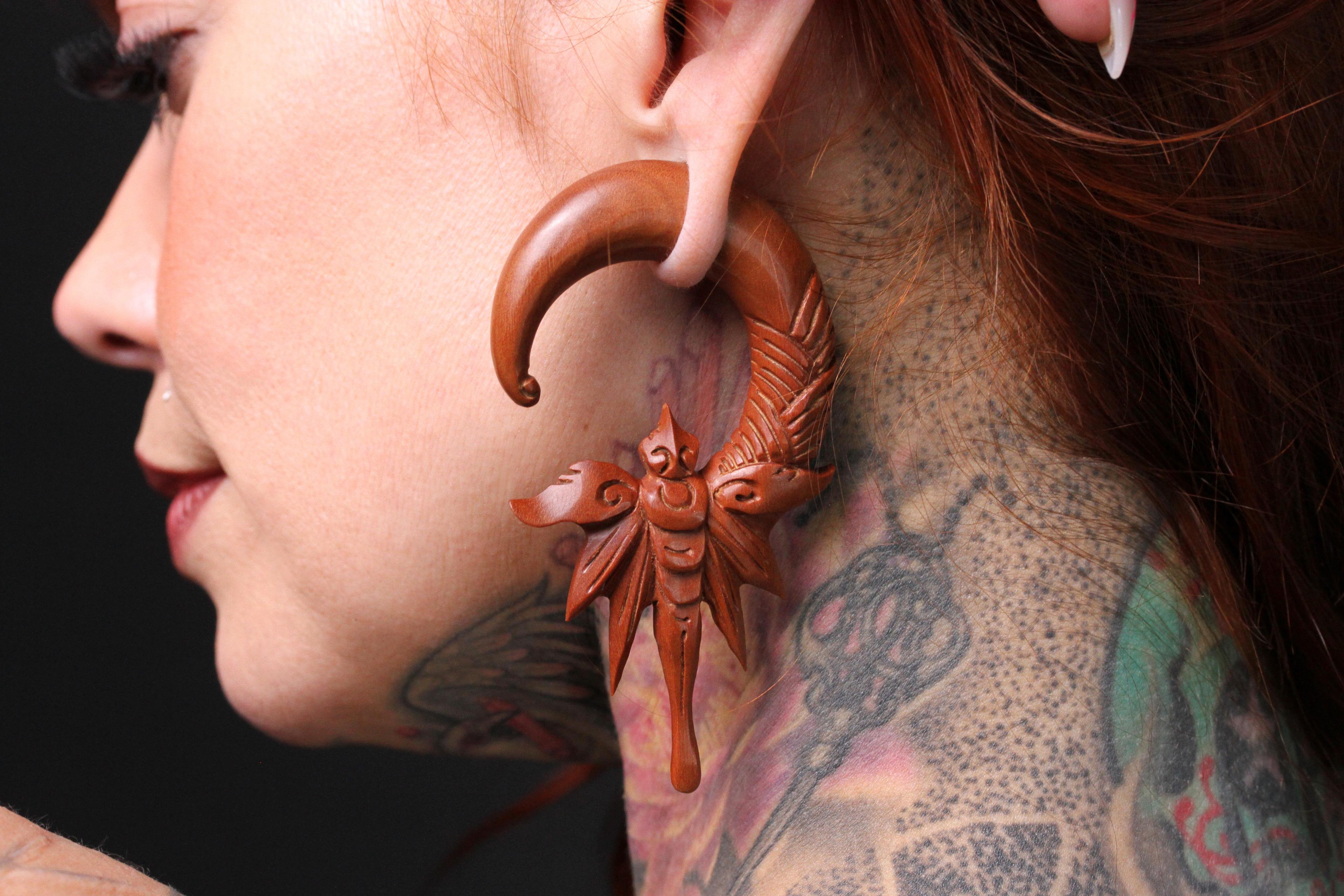
The Art of Safely Stretching Your Ears
The act of stretching your ears is akin to an art form, necessitating patience, precision, and vigilant care. To set the stage, increase blood flow to your earlobes through massaging or taking a hot shower. And remember, only start stretching once your piercing is fully healed, showing no signs of swelling or discomfort.
Hydration is key too - use Vitamin E oil to moisturize the skin and reduce the risk of scarring. As for materials, stick to non-porous ones like stainless steel or glass for fresh stretches to maintain hygiene and prevent infections. practices in greater detail.
Taper Slide Technique
The taper slide technique is a popular method used in the ear stretching process. The stars of this technique are stainless steel tapers. They’re smooth, sterilizable, and have a lower infection risk, making them ideal for stretching. Plus, they often include a concave back for seamless jewelry insertion.
Before you start, ensure the taper is sterilized with rubbing alcohol. Lubricate both the taper and the piercing liberally. Then, gently insert the taper into the piercing, starting with the thinner end. If you feel any discomfort, stop immediately to prevent injury.
Once the taper is in place, follow it with a plug to maintain the new size. The taper should guide the plug into position. Remember, careful insertion is critical to avoid tearing and facilitate even stretching.
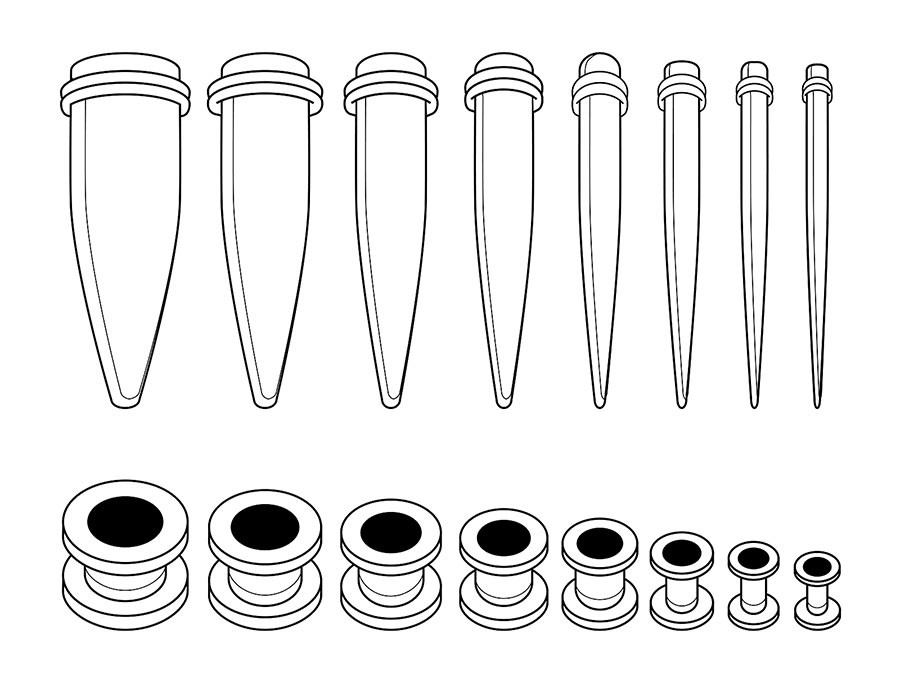
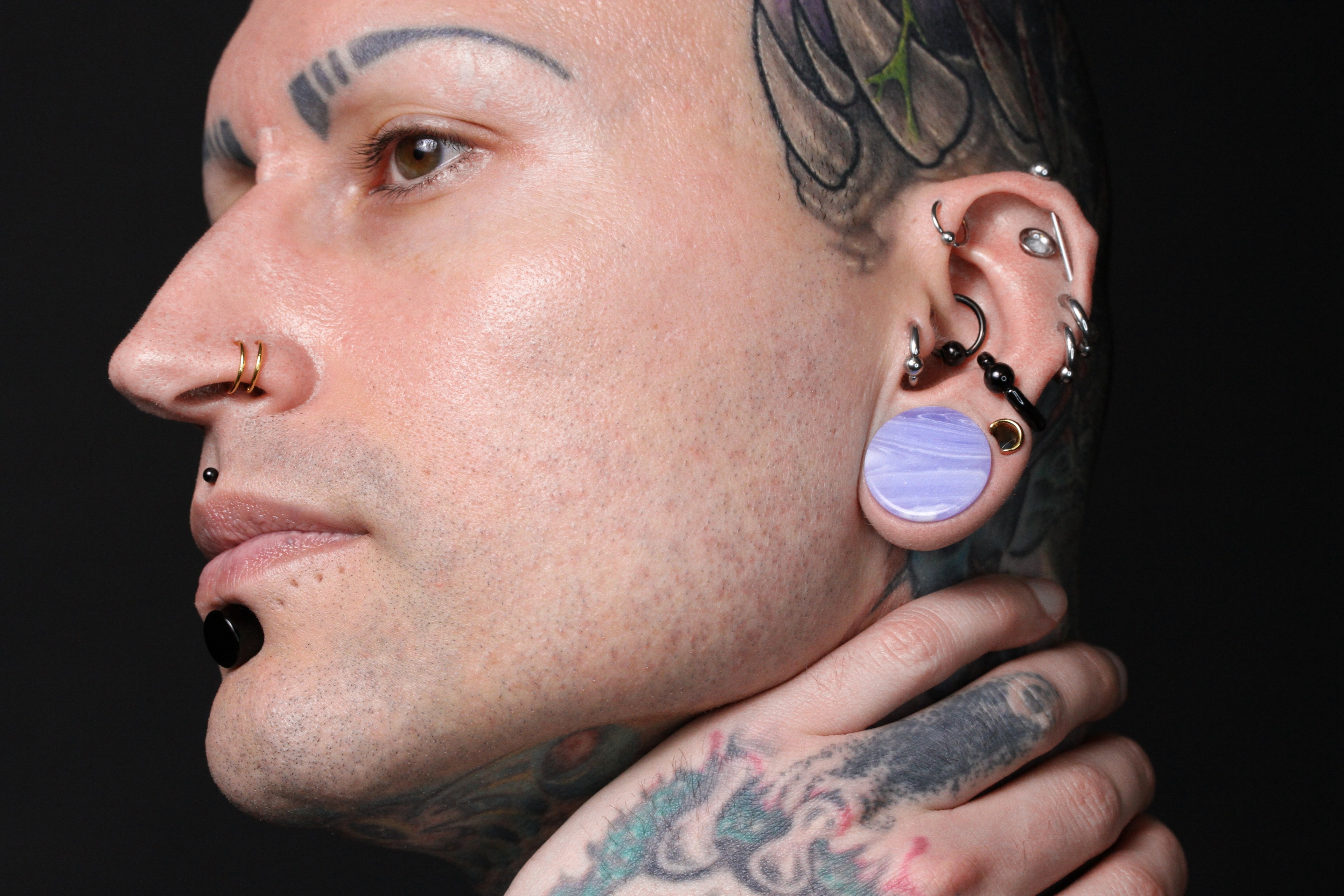
Waiting Periods
Patience is key in the ear stretching journey. After starting with single flare plugs, wait at least 6 weeks, ideally 6 to 8 weeks or longer, before moving up by 1mm. This ensures that your earlobes are ready for the next size and reduces the risk of complications.
But remember, everyone’s healing times are unique. You might need longer than the standard 6 to 8 weeks between sizes. If you experience significant irritation or other complications, a professional may recommend downsizing and more waiting time before attempting to stretch further. Failing to abide by these waiting periods could lead to ear damage, including tearing, infection, and diminished elasticity.
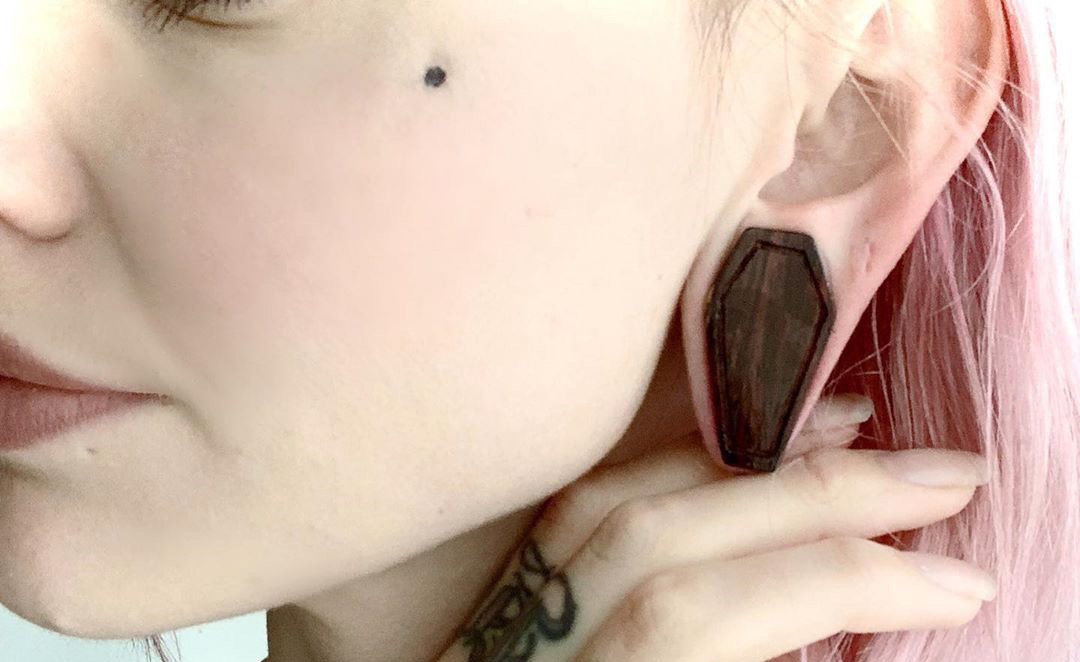
Signs of Stretching Too Quickly
Just like the gears of a clock, your ears need to stretch in harmony. If you’re experiencing discomfort while inserting a taper, feeling resistance, or even worse, pain or bleeding, these are clear signs that you’re stretching too quickly.
Stretching too quickly can lead to tearing and the formation of a blowout, where scar tissue builds up, resulting in permanent scarring that may require medical intervention. If resistance or discomfort is encountered, it’s best to wait at least one to two more weeks before attempting the next size. This patience will prevent possible damage to the tissue, preserving the health of your stretched ears in the long run.
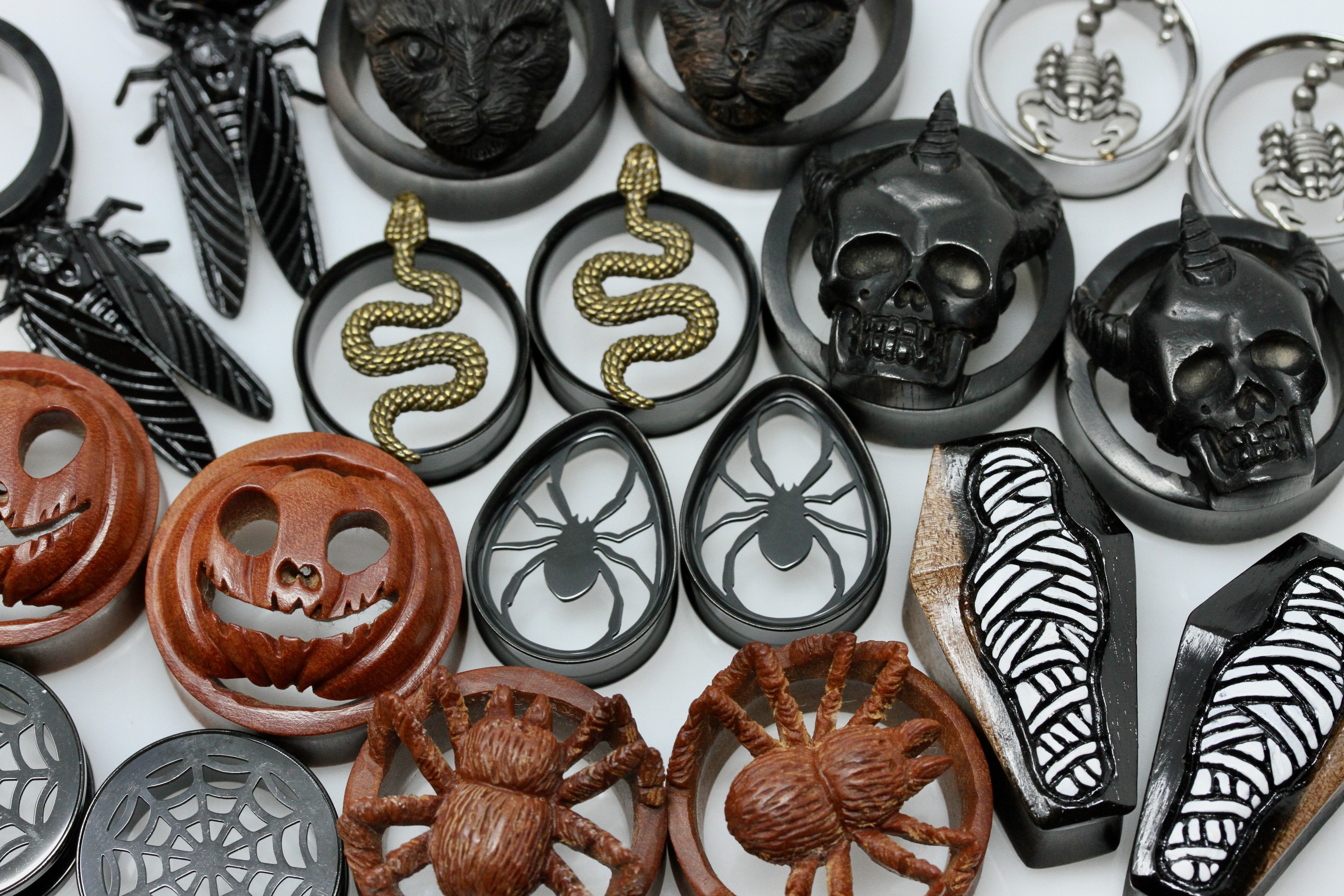
Materials Matter: Selecting the Best Jewelry for Stretched Ears
In the realm of choosing jewelry for your stretched ears, one thing should be unequivocally understood: the choice of material is of utmost significance. From stainless steel and titanium to glass and natural stone, the options are diverse. The Association of Professional Piercers recommends quality, non-porous materials like:
-
stainless steel
-
titanium
-
niobium
-
certain types of glass and stones
for use after stretching.
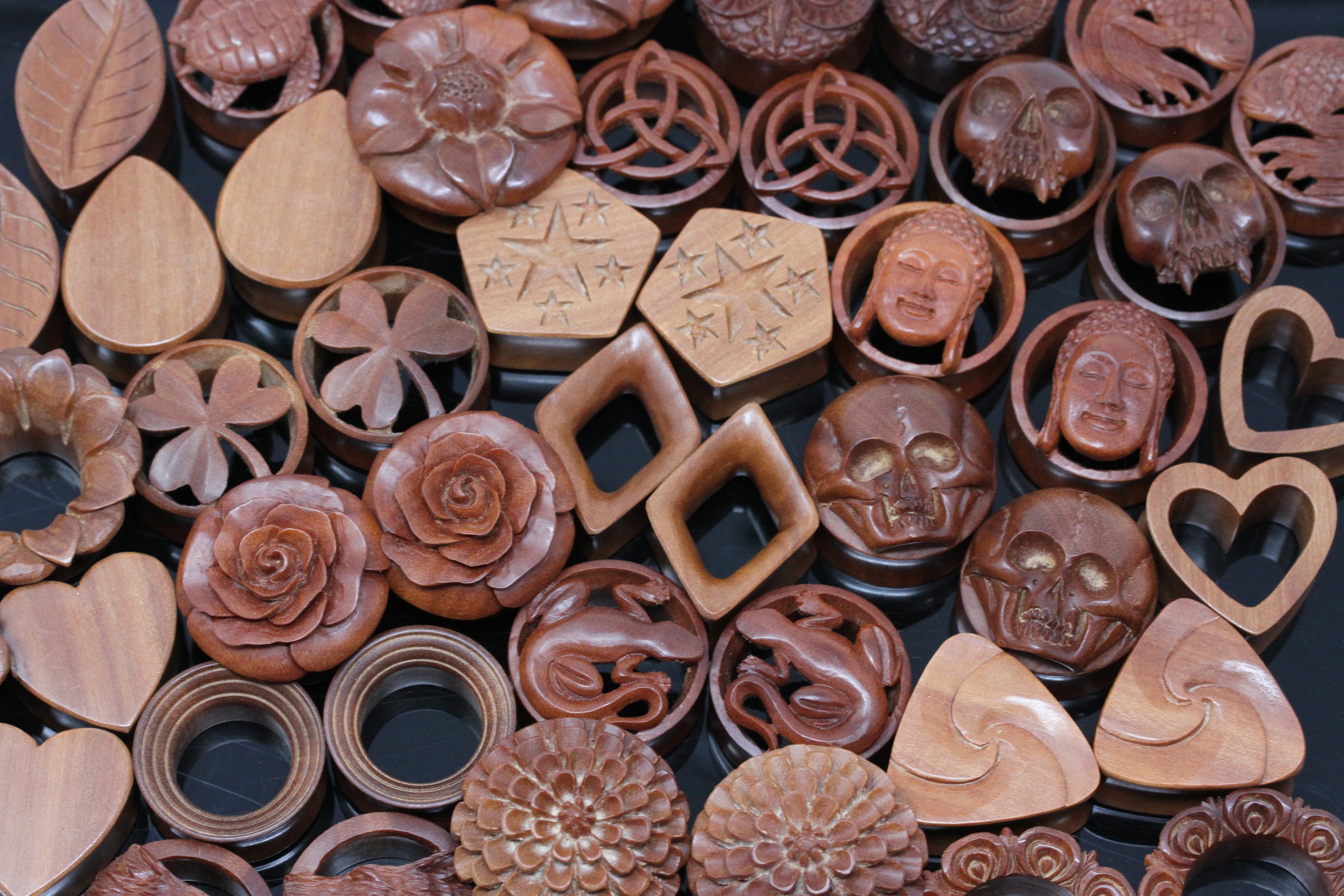
Non-Porous vs. Porous Materials
Non-porous materials are preferred for healing stretched ears due to their hygienic properties. They don’t harbor bacteria and are water-resistant, making them ideal for healed piercings. On the other hand, there are organic materials like:
-
bone
-
horn
-
stone
-
wood
These materials can be worn once you've healed fully, reached your goal size, or in between sizing up. With proper care of these materials and your piercings, they can be safe choices.
Some surfaces can trap bacteria and dead skin cells, making them less suitable for unhealed stretches. Choosing the right material for your jewelry is essential for the long-term health of your stretched ears. Whether it’s the durability of glass and stainless steel or the natural aesthetic of bone or horn, understanding the nature of each material can help you make an informed decision.
Remember, with proper selection and care, you can prevent complications and enjoy your stretched ears for years to come.
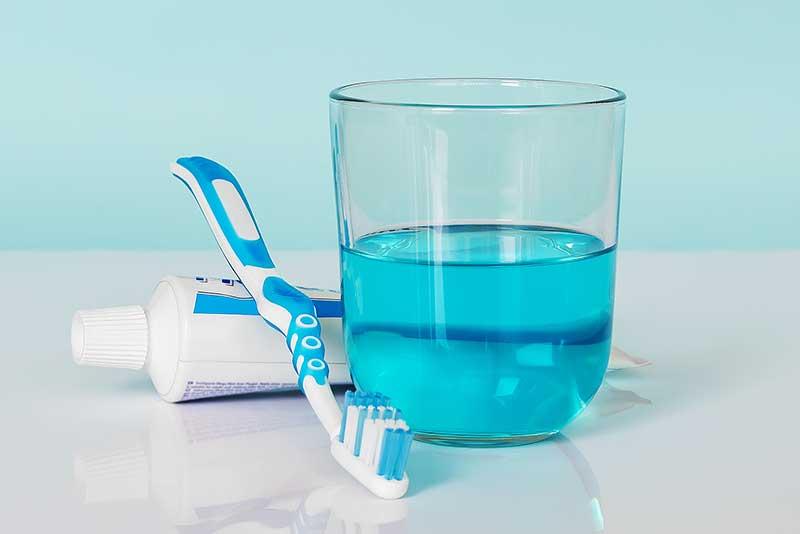
Caring for Natural Material Plugs
Natural materials like bone, horn, and wood bring a unique charm to ear stretching jewelry. However, they require regular oiling to prevent the material from becoming dry and brittle. Jojoba oil is a favorite for this task, but coconut oil, olive oil, or beeswax can also keep your plugs hydrated and shiny. Always make sure you are not allergic to the substance you choose before using it.
For wooden jewelry, remember to keep it away from water to prevent damage. Store it in a cool, dry place inside a protective pouch away from dust and moisture. With the right care, your natural material plugs will maintain their beauty and longevity.
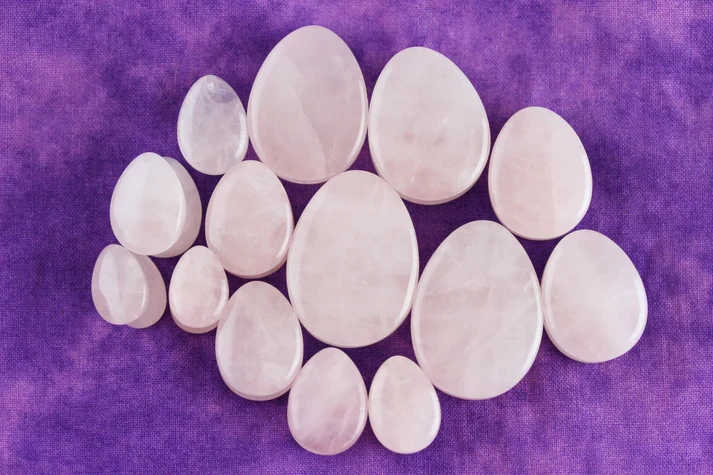
Mastering the Use of Double Flared Plugs
In the world of ear stretching, double flared plugs are a popularly favored choice. However, they require a bit of mastery for proper insertion and removal. To insert double flared plugs, the process should be done carefully to avoid damage to the stretched earlobe. Using lubricants such as jojoba oil can ease the process, making it smoother and less painful.
When it’s time to remove your double flared plugs, take it slow. Here are some tips to consider:
-
Relax your earlobe using warm water and dry it before attempting to take out the jewelry.
-
Lubricants like Jojoba oil can help the plugs slide out more easily.
-
A gentle massage around the piercing with lubricant can help the jewelry to move within the piercing hole.
-
Always remember, patience is key when removing double flared plugs; rushing or using force can cause injury to the earlobe.
Maintaining Healthy Stretched Ears
The health of stretched ears is a direct outcome of meticulous care and attention. Regular cleansing with saline solution or a mild, fragrance-free soap can keep infections at bay and promote healing. To clean your gauged ears effectively, use an antimicrobial soap with warm water daily and clean the jewelry before reinserting it into the earlobes.
Moisturizing your ears is equally important. Regular oil massages improve blood flow and help the skin stay elastic. Jojoba oil or any skin- safe oil id recommended.
Avoid harsh chemicals like rubbing alcohol or peroxide as they can damage healthy skin cells and impede the repair of stretched earlobes.
Remember, maintaining the health of stretched ears includes regular cleaning and oil massages, with occasional breaks from jewelry to let your earlobes recover and ensure healed ears.

Adapting to Lifestyle: Wearing Earrings with Stretched Ears
When you wear plugs and hangers for stretched ears, your selection should ideally enhance and reflect your distinctive style. You can use adapters to accommodate certain standard-sized earrings or opt for dangle or drop earrings that complement your plugs or tunnels. The current trends in stretched ear jewelry offer a diverse range of options such as unique plug earrings and tunnels, including those offered by Two Feather Plugs and custom plugs in materials like stone, wood, and precious stones.
Plugs for stretched ears come in various shapes including:
-
Round
-
Teardrop
-
Tunnels
-
Saddle
-
Heart
-
Triangle
-
Spiral
-
Square

The diversity allows you to experiment and express your individual style in the most creative ways. So, let your earrings make a statement, and let your stretched ears be the canvas to display that creativity.
When to Seek Professional Help
Even though the process of ear stretching is thrilling, it’s imperative to remain attuned to your body’s signals and seek expert help when required. If you experience symptoms like:
-
persistent soreness
-
redness
-
weeping
-
inflammation in your stretched ear tissue
it’s time to consult a professional.
If serious symptoms such as infections or tissue loss arise, don’t attempt to manage them with home care. Seek medical attention immediately. Moreover, earlobes that do not recover over time from stretching and present significant damage might need plastic surgery for repair. In such cases, it’s crucial to seek professional help to prevent further complications and ensure the health and safety of your stretched ears.
Navigating the journey of ear stretching is an enriching experience, blending history, personal expression, and body modification. Selecting the right size, ensuring safe stretching practices, choosing the best materials, and mastering the use of double flared plugs, all contribute to a successful ear stretching journey. Regular care and maintenance, along with proper troubleshooting of common issues, ensure the health of your stretched ears.
Finally, being open to adapting your earring choices and not hesitating to seek professional help when necessary, round off this exciting adventure. Now, armed with this wealth of knowledge, venture forth and make your mark in the world of ear stretching!
Stretched Ears 101 Frequently Asked Questions
Stretching your ears can be safe if done patiently and carefully, avoiding painful complications like blowouts and tears. However, stretching too quickly or without proper care can cause infections and permanent injury. Remember to take good care of your ears.
People stretch their ears for cultural traditions, to wear unique types of jewelry, and to show age and wisdom in certain tribes. It's a way to make a fashion statement and express individuality.
Yes, with proper care, stretched ears can stop smelling. Gradual stretching, non-porous jewelry, and regular cleaning can help solve the issue of smelly gauges.
Every person's body reacts differently, so the healing process of stretched ears varies. While some earlobes may shrink back to normal after removing the jewelry, others may require surgical correction. Generally, smaller holes may naturally shrink, but there's no guarantee.
To start your ear stretching journey, you should first get an initial piercing and let it heal for 6-8 weeks. Then, you can begin stretching at a 16 gauge once your ears are fully healed. Good luck!








